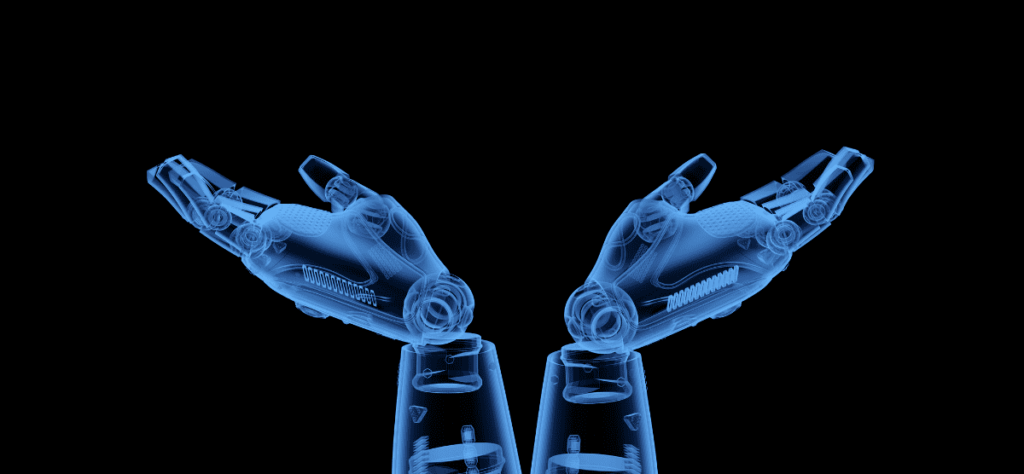What does generative AI mean?
Generative AI refers to artificial intelligence systems that can create and generate entirely new data, content or material in an autonomous way, as opposed to AI that can only analyze existing data.
Generative AI works by finding deep patterns and relationships in large amounts of data that it has been trained on. From these learned patterns, the AI itself can produce new output that it hasn't directly seen before but is similar to what it has seen during training.
How is generative AI trained?
The underlying technology behind highly generative AI is neural networks and deep learning. These neural networks are trained by "feeding" them with huge amounts of data within a specific domain. This could be millions of images of objects, billions of sentences of text or thousands of hours of music.
During training, the neural network finds statistical patterns in the data and learns the underlying relationships. In this way, it builds an internal representation of the world that enables it to create something new from this model.
Types of generative AI
Some examples of generative AI include:
- Text generation - Create new coherent text based on learned language understanding.
- Image generation - Generate new images from learned knowledge of visual objects.
- Video/audio - Generate new videos or audio using deep learning.
- 3D modeling - Design new 3D models and objects.
- Computer vision - Generate descriptions of content in images.
Big language models boost generative AI
Much of the generative AI currently experiencing breakthroughs is based on so-called large language models (LLMs). These models are trained on huge amounts of text data and achieve impressive language generation capabilities.
Large language models like GPT-3 and PaLM can write persuasive texts, answer questions, create code and much more. Together with other generative techniques, this opens up entirely new applications for AI.
Applications of generative AI
Some possible applications of generative AI:
- Automatic text and content production
- Advanced chatbots and digital assistants
- Generating graphics, 3D models etc. for design
- Synthetic media and entertainment content (deepfakes)
- Automatic coding and software development
- Personalized recommendations and predictions
Pros and cons
Some of the benefits of generative AI are that it can:
- Automate time-consuming manual tasks
- Produce high quality content on a large scale
- Personalize content and services in real-time
- Assist people creatively with things like design and art
Some of the drawbacks and challenges are:
- Risk of bias, errors and misinformation in content
- Copyright and ownership issues
- Misuse for e.g. fraud and hacking
- Regulation can be a challenge
In other words, generative AI has enormous potential but also important considerations that we've only just seen the beginning of.
Future prospects for generative AI
Most experts agree that generative AI will continue to gain momentum and become more and more advanced in the coming years. As the technology matures, it will begin to disrupt many industries.
Major global tech companies are investing heavily in the development of generative AI. At the same time, efforts are being made to minimize the problems of bias and erroneous content. So the potential for generative AI is considered to be almost limitless in the long term.













